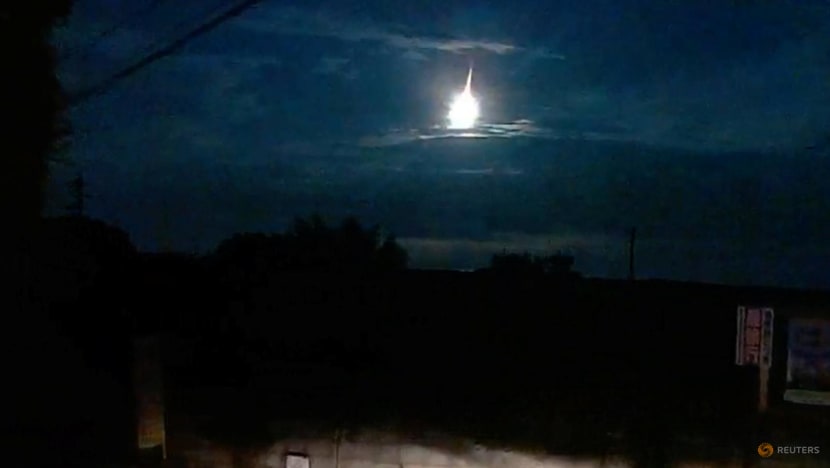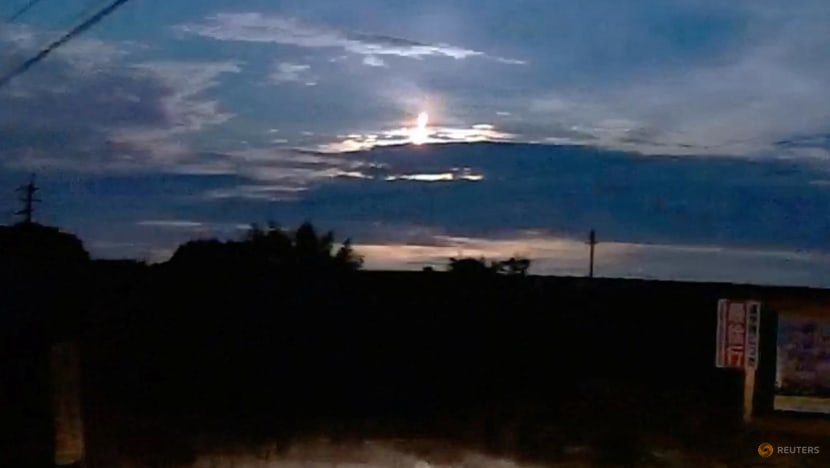Fireball lights up night skies across southern Japan

A fireball streaks across the sky, as seen from Kumamoto, Kyushu, Japan, on Aug 19, 2025, in this screengrab from a dashcam video obtained from social media. (Image: MARUPEKE/@MARUBATU7/via Reuters)
TOKYO: The night sky across southern Japan was briefly lit up late on Tuesday (Aug 19), after a glowing ball of light was seen falling through the sky in various parts of Kyushu and Shikoku.
Experts have identified the "fireball", which was first sighted shortly after 11pm, as a particularly bright meteor or shooting star, reported Japanese broadcaster NHK.
Numerous posts appeared on social media capturing footage of the luminous ball burning brightly as it descended.
"A white light I had never seen before came down from above, and it became so bright that I could clearly see the shapes of the houses around us," Yoshihiko Hamahata, who was driving in Miyazaki Prefecture, told NHK.
"It seemed like daylight. For a moment, I didn't know what had happened and was very surprised," he told the public broadcaster.
Toshihisa Maeda, the director of the Sendai Space Museum, described the event as a phenomenon in which dust particles or asteroid fragments from outer space glow brightly as they enter the atmosphere and burn up.
"I imagine the surrounding area became as bright as day for a moment, and it's possible that it fell into the ocean as a meteorite," Maeda was quoted as saying.
"People reported feeling the air vibrate," he told AFP. "It was as bright as the Moon."

Meteors are relatively common, with over 500,000 fireballs a year over Earth. Most of them fall over oceans and uninhabited areas, however, making them a memorable treat when they are seen.
But larger fireballs have been known to cause damage, such as the Chelyabinsk meteor, which caused injuries and widespread damage when it exploded over Russia's Ural region in 2013.
Objects causing fireball events can exceed one metre in size, according to NASA.
Fireballs that explode in the atmosphere are technically referred to as bolides, although the terms fireballs and bolides are often used interchangeably.













